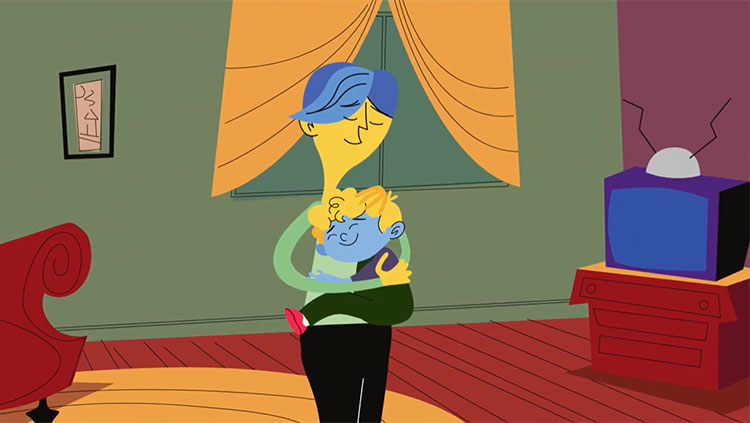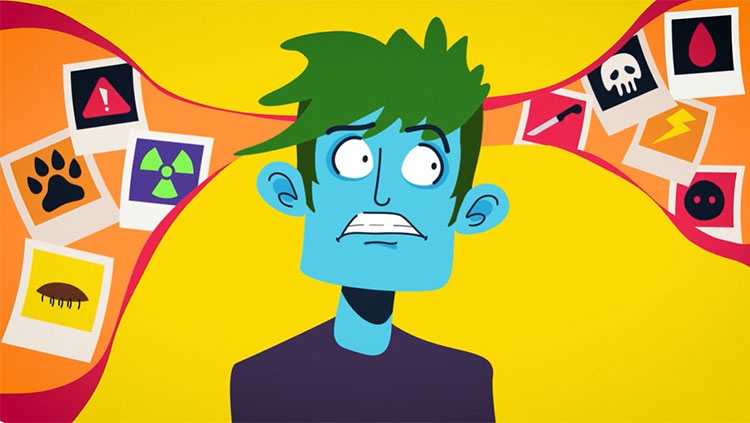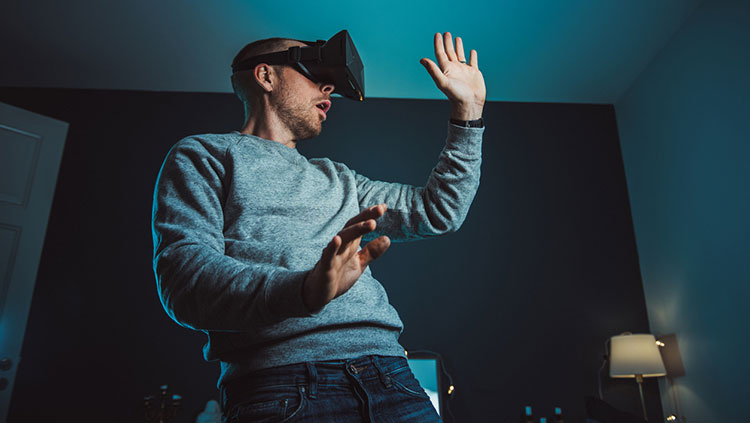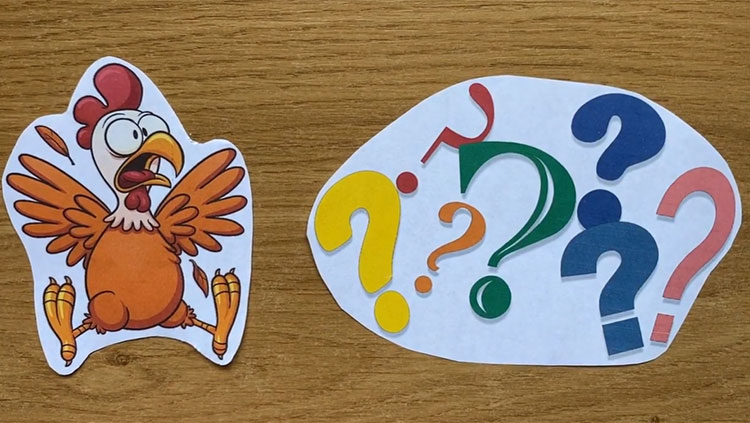No Fear: The Brain of Patient SM
- Published17 Dec 2015
- Reviewed17 Dec 2015
- Author Jessica P. Johnson
- Source BrainFacts/SfN
One woman’s rare condition left her with an astonishing side effect: the inability to feel fear. This provided researchers an opportunity to study a behavior most of us take for granted. Hear the story from the doctor who first diagnosed the woman known as Patient SM in this podcast from BrainFacts.org.
Have a question about what you just heard in our podcast? Just ask! Submit A Question
Music by Josh Woodward, used under a creative commons license.
CONTENT PROVIDED BY
BrainFacts/SfN
Transcript
SfN: I'm Jessica Johnson for BrainFacts.org.
What happens inside your brain when you find yourself in a potentially dangerous situation, like encountering a stranger in a dark alley? How does your brain process this fear and how does it recognize expressions of fear on the faces of others? What would life be like if you never experienced fear?
Twenty years ago, scientists began to uncover answers to these questions when a young woman in her 20s arrived at a hospital complaining of possible seizures. During discussions with the woman, whom they refer to as Patient SM to protect her anonymity, her doctors discovered that she lacked all sense of fear. Later, MRI and CT scans revealed clues to the possible cause – extensive damage to the amygdala region of her brain. I spoke with the doctor who first diagnosed SM, Daniel Tranel, a clinical psychologist and a professor of neurology and psychology at the University of Iowa, to understand how the brain processes fear and what happens when this function simply doesn’t exist.
SfN: Dr. Tranel, your patient, SM, is a woman with a rare genetic condition called Urbach-Wiethe disease, a rare recessive disease that has only been reported 400 times since its discovery in 1929. The disease affects people very differently, but it caused SM to lose her fear response as a young girl. Could you describe what the disease has done to her brain to cause this?
Tranel: Her amygdala has been filled with calcification. There are mineral deposits in her amygdala. So the neural tissue, the brain cells that would normally be there, are not there. Completely gone.
SfN: And what is the amygdala's role in the fear response?
Tranel: The amygdala is a critical part of the brain network for triggering fear. Especially from visual stimuli. And I would say especially in social situations. The amygdala has been found to be one of the key nodes in the network that's important for learning associations between certain situations and fear.
SfN: Could you describe the step-by-step process of what happens in the brain when you encounter something fear-inducing?
Tranel: There are a couple of different theories of that. I think that the basic, primitive system for that involves a chain of responses from the cortex — the cortex is where you would process the incoming sensory information, so seeing something or hearing something that would make you afraid — and then that information would get communicated to your limbic system, which is kind of an emotion-processing system and would trigger a basic autonomic response that is part of our fight-or-flight system, and we would flee or fight depending on what the situation called for.
SfN: Because Patient SM’s amygdala doesn’t function in a normal way — that is, it fails to recognize fearful stimuli that would normally trigger a fear response — how is she able to avoid situations that are clearly unsafe, such as a busy road?
Tranel: She has basic instincts about self-preservation in terms of not walking out in front of a car or jumping off a cliff. She was normal until approximately adolescence, so she acquired a normal set of understanding about basic situations that are going to put you into harm’s way. But then after she lost her amygdala, she lost the ability to have fear in response to socially related situations that would normally cause fear. And these are things like approaching unsavory people and going into situations that because of their nature — a bad neighborhood, a dark alley — would be unsafe. Most people would find them unsafe.
SfN: Is she able to take people's advice that a certain situation may be dangerous and follow that advice?
Tranel: Yes, but the wrinkle there is that in the real world, when those situations arise, she doesn't behave appropriately. We can sit here in a pencil and paper situation, reason our way through, and say, “Well, it's not a good idea to go through a back door into a nest of drug smugglers.” But that's different from, OK, you're out there and you're walking along and you see something that is intriguing and make a judgment about, “Well, that's a very unsafe situation” or not. That's where she would not behave appropriately.
SfN: Patient SM has been harmed and threatened before in such real-life situations, including being held at gunpoint. Does she learn from these encounters that certain situations are unsafe?
Tranel: No. That's a critical problem is that she does not learn from those situations. And that's where the amygdala comes into play. If you damage the amygdala in rats or mice, for example, you can see that exact deficit. So they don't learn an association between a particular stimulus and a fearful situation.
SfN: Are there other complex behaviors or emotions that are also impacted by SM’s non-functioning amygdala?
Tranel: The one that I think is especially notable is negative surprise. Negative surprise is like the surprise of a haunted house where something pops out unexpectedly. And in fact we know from a field experiment we did that she lacks that response — taking her through a haunted house.
SfN: How did she react?
Tranel: She reacted positively. She found those things amusing. They got her attention, but they were not negative.
SfN: Patients with amygdala damage tend to have difficulty recognizing when others are experiencing fear. Does SM experience this as well?
Tranel: Yep. One of the early discoveries in Patient SM is that she couldn't recognize fear in facial expressions. If you look at my face and I have fear on my face and you recognize that, that could be an important ability because you'd want to know, well, why is that on my face? Is there something right next to me that's about to eat me and might eat you too? In our studies of this patient, we discovered that she couldn't recognize fear in stimuli, especially visual ones.
SfN: So SM experiences no fear to simple fearful stimuli such as a poisonous snake, but also to more complex social situations such as a shady character or the fearful facial expressions of others that might indicate that danger is nearby. Is it true then that our ability to perceive social situations enables us to learn what to be afraid of?
Tranel: Correct.
SfN: Has SM experienced any fear at all since she lost function of her amygdala?
Tranel: That's a good question and the answer is yes. We did an experiment in fact using carbon dioxide. If you breathe high concentrations of carbon dioxide, you have a panic sense, which is that you're suffocating. We did that experiment with her and she had a panic response to that. More than fear, it was panic. That taught us that there are different routes into the system, one of which probably goes through basic brainstem pathways that are not damaged in her and that are basic survival things like a sense of getting the proper amount of oxygen in your air.
SfN: Is there any way to treat SM’s condition?
Tranel: I don’t think so. The problem with that is that what you want is to pair one stimulus with another and that pairing is mediated by the amygdala. If you don't have it, you can't do that.
SfN: Thanks for listening. Check out more information about how the brain processes fear at BrainFacts.org.
Also In Emotions, Stress & Anxiety
Trending
Popular articles on BrainFacts.org


















